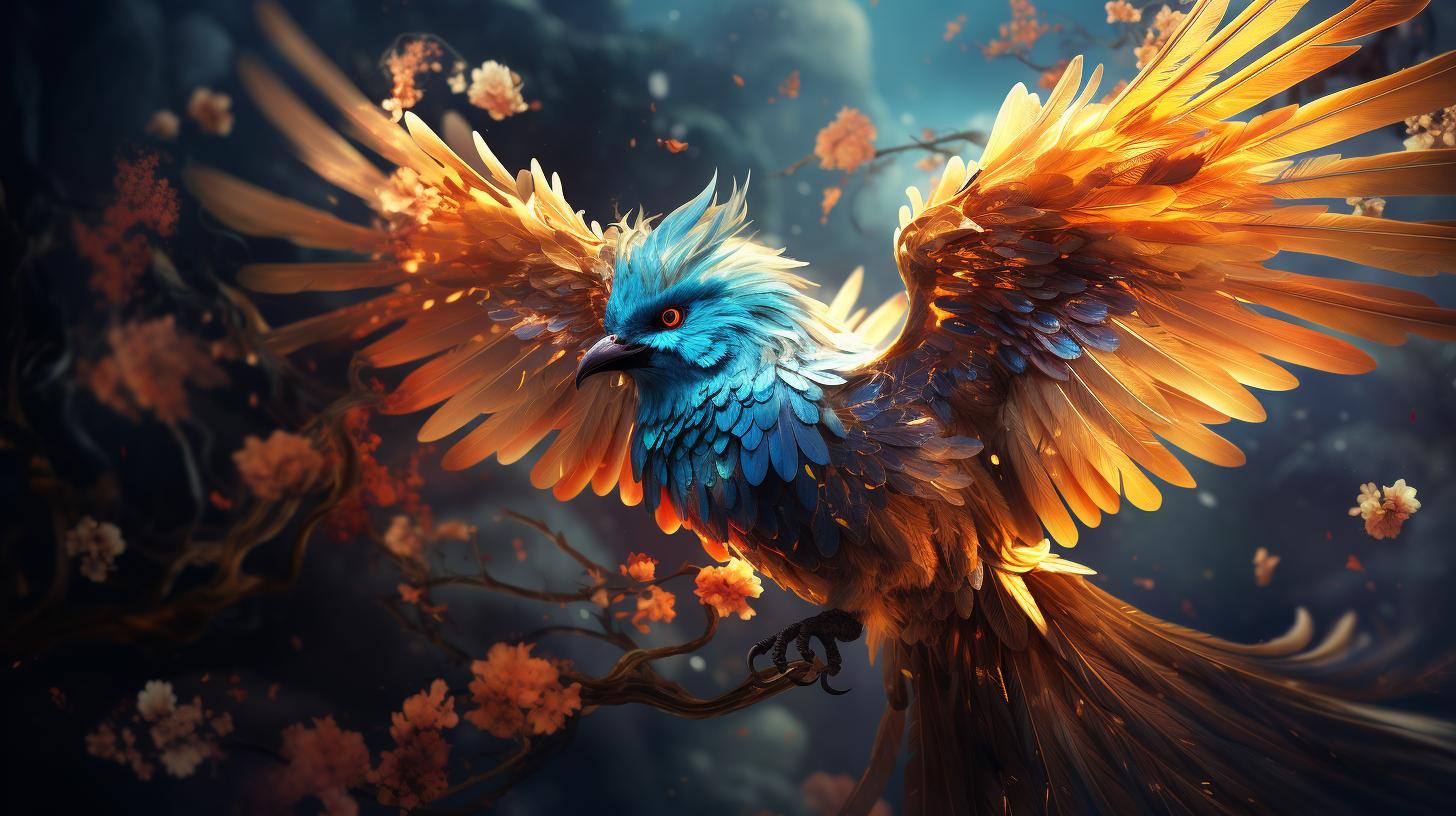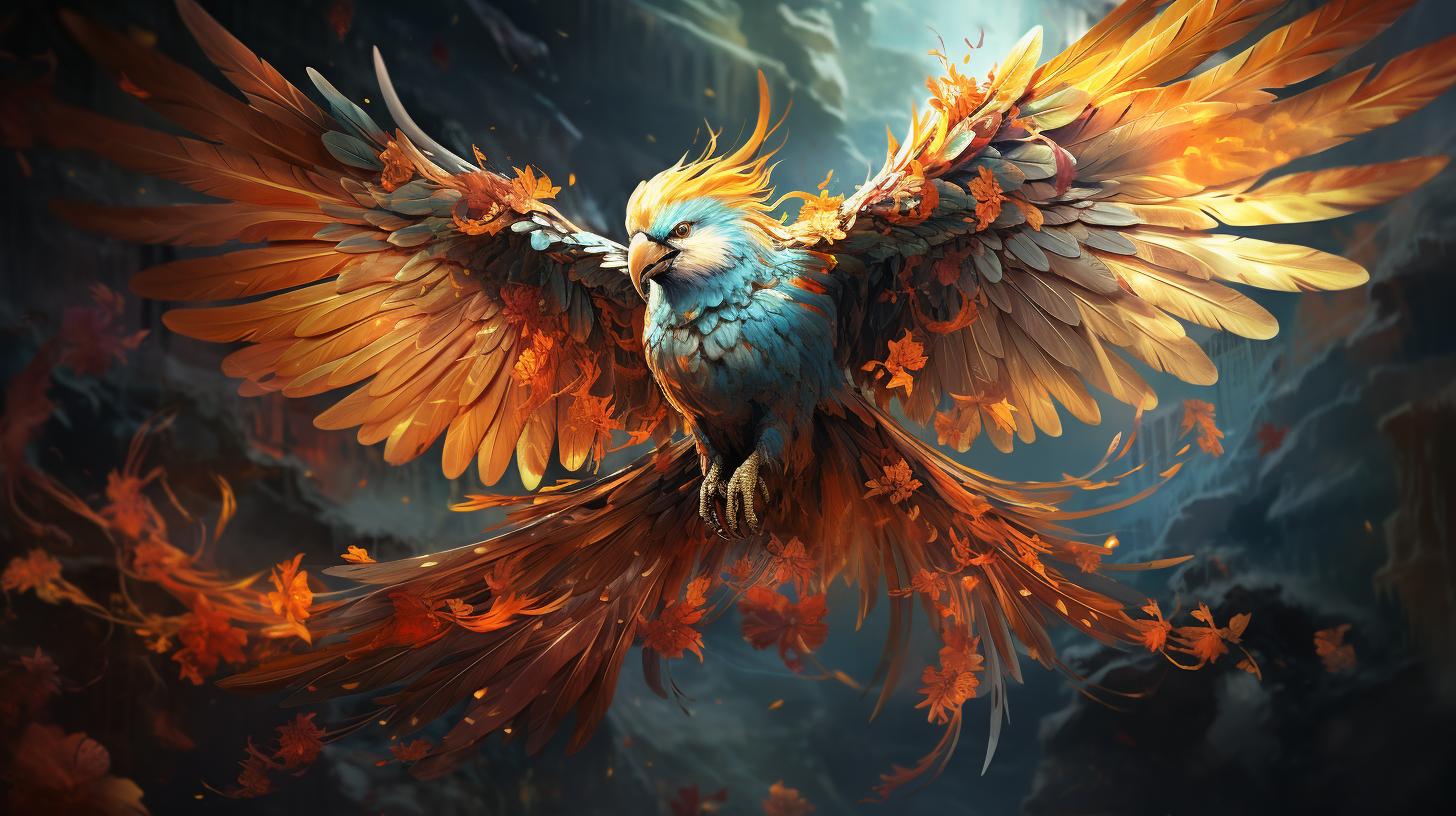Amihan Bird: A Mythical and Majestic Avian Wonder

The Amihan bird holds a significant place in Philippine mythology, representing the god of wind and known for its majestic presence. This mythical creature has deep symbolism in Philippine culture and has inspired various art forms.
Additionally, the Epipremnum ‘Amihan’ cultivar, named after this legendary bird, showcases stunning variegated foliage and is treasured by plant enthusiasts. Let’s delve into the rich history, cultural significance, characteristics, and care tips surrounding the Amihan bird and the Epipremnum ‘Amihan’ plant in this comprehensive article.
Overview of Amihan Bird in Philippine Mythology
The Amihan bird holds a significant place in the rich tapestry of Philippine mythology. Revered as the god of wind and portrayed as a majestic creature, the Amihan bird is deeply intertwined with the cultural heritage and belief systems of the Filipino people.
As a symbol of peace, freedom, and redemption, it is often associated with the space between the sea and the sky, serving as a protector and guide.
According to Tagalog legends, the Amihan bird, along with the divine beings Bathala and Aman Sinaya, was among the first creatures to inhabit the cosmos.
It played a vital role in the origin and salvation of humankind, particularly in the story of Malakas and Maganda, the first humans. The bird’s golden plumage and its representation as a deity reflect its integral role in Philippine folklore.
Throughout history, the Amihan bird has influenced various aspects of Philippine culture, including art, literature, and traditional practices. Its graceful presence and symbolic significance continue to captivate people’s imaginations today. By exploring the mythology surrounding the Amihan bird, we can gain a deeper understanding of the cultural heritage and spiritual beliefs of the Filipino people.
The Legend of Amihan: The God of Wind and Protector of the Cosmos
In Philippine mythology, the Amihan bird holds a significant role as the god of wind and the guardian of the cosmos. According to Tagalog legends, Amihan is considered the first creature to inhabit the universe, alongside the gods Bathala and Aman Sinaya.
Represented as a golden bird, Amihan safeguards the space between the sea and the sky, symbolizing peace, freedom, and redemption.
As the god of wind, Amihan is responsible for the arrival of the early monsoon climate in the Philippines, known as the “Amihan season.”
This period is marked by cool northeast winds that bring relief from the scorching heat and signal the beginning of favorable farming conditions.
The Amihan bird’s mythical presence is deeply rooted in Philippine culture, inspiring various artistic expressions such as paintings, sculptures, and folklore.
It continues to be revered as a symbol of natural forces and cosmic harmony.
Unveiling the ancient legends and stories behind Amihan bird allows us to appreciate its cultural significance and its connection to the Epipremnum ‘Amihan’ cultivar – a plant named in honor of this majestic creature.
Amihan Bird: Symbolism and Significance in Philippine Culture
In Philippine culture, the Amihan bird holds profound symbolism and significance. It is revered as a representation of the god of wind, Amihan, who played a vital role in the creation and harmony of the cosmos.
The bird is often depicted as a majestic and powerful creature, embodying the values of peace, freedom, and redemption.
The Amihan bird symbolizes the connection between the sea and the sky, serving as a protector of the space in between.
It is believed to bring balance and tranquility, and its presence is associated with favorable weather conditions, particularly the early arrival of the monsoon season in the Philippines, known as “Amihan.”
This awe-inspiring avian wonder has inspired various art forms, including mythology, literature, and visual arts. Artists often depict the Amihan bird as a golden bird with magnificent plumage, reflecting its divine nature and the hope it represents.
Moreover, the Amihan bird’s symbolism extends to the unique and precious Pearl Baroque, adorned in an 18k gold-plated ring. Just like the bird itself, the irregular shape and size of the Pearl Baroque add to its natural beauty and individuality.
In conclusion, the Amihan bird holds immense symbolism and significance in Philippine culture. Its representation as the god of wind, the protector of the cosmos, and the bringer of peace and redemption makes it an integral part of mythology and artistic expressions in the Philippines.
Understanding the Epipremnum ‘Amihan’ Cultivar: Origins and Characteristics
The Epipremnum ‘Amihan’ cultivar is a unique and highly sought-after plant variety with stunning variegated foliage that showcases a beautiful blend of white and green. This cultivar, a genetic variant of the Epipremnum pinnatum species, is named after the mythical Amihan bird from Philippine mythology.
While the exact origins of the ‘Amihan’ cultivar remain unknown, it is believed to have been named by James Salagan in honor of the legendary bird.
What sets the Epipremnum ‘Amihan’ apart are its large, narrow leaves with deep fenestration extending towards the central vein.
Unlike other varieties, the variegation of colors on the ‘Amihan’ cultivar is not limited to specific areas of the plant, creating a visually captivating display.
Propagation of the Epipremnum ‘Amihan’ is achieved through various reproductive methods, although its official acceptance and establishment are yet to be confirmed.
It is important to note that this cultivar is a trepador, meaning it is a climbing plant. Providing a suitable support or trellis is recommended to encourage its growth.
In summary, the Epipremnum ‘Amihan’ cultivar is a fascinating plant with origins linked to the mythical Amihan bird.
Its variegated foliage, propagation methods, and climbing habit make it a coveted choice for plant enthusiasts seeking a touch of enchantment in their indoor or outdoor spaces.
Cultivation and Care Tips for the Epipremnum ‘Amihan’ Plant
Growing and caring for the Epipremnum ‘Amihan’ plant is a rewarding experience for both seasoned and beginner gardeners.
Follow these essential tips to ensure the health and vitality of your ‘Amihan’ cultivar:
- Light: Place your Epipremnum ‘Amihan’ plant in a bright location with indirect sunlight. Avoid exposing it to direct sunlight, as it can scorch the leaves.
- Temperature: Maintain a temperature range between 65°F (18°C) and 85°F (29°C).
Protect the plant from cold drafts, as they can damage its foliage.
- Watering: Keep the soil evenly moist but not waterlogged. Allow the top inch of soil to dry out before watering again.
Avoid overwatering, as it can lead to root rot.
- Humidity: The Epipremnum ‘Amihan’ thrives in moderate to high humidity levels. Mist the leaves regularly or place a humidifier nearby to increase humidity levels.
- Fertilization: Feed your ‘Amihan’ plant with a balanced, water-soluble fertilizer during the growing season.
Follow the manufacturer’s instructions for application rates.
- Pruning: Trim any yellow or damaged leaves to maintain the plant’s appearance. Pruning also helps control its growth and encourages bushier foliage.
- Support: As a climbing variety, provide a trellis or a moss pole for your Epipremnum ‘Amihan’ to climb and maximize its growth potential.
By following these care tips, you can enjoy the beauty of the variegated ‘Amihan’ foliage and ensure the overall health and well-being of your Epipremnum ‘Amihan’ plant.
Exploring the Variegated Foliage of the Epipremnum ‘Amihan’
The Epipremnum ‘Amihan’ cultivar is renowned for its captivating variegated foliage, which adds a touch of elegance and uniqueness to any plant collection. The combination of white and green creates a visually striking pattern, with the white color prominently standing out against the backdrop of lush green leaves.
The large, narrow leaves of the Epipremnum ‘Amihan’ exhibit deep fenestration, which refers to the intricate pattern of holes that can extend right up to the central vein. This feature adds to the overall visual appeal, giving the plant a distinct and intriguing aesthetic.
Unlike some variegated plants, the beautiful coloration of the Epipremnum ‘Amihan’ is not limited to specific areas of the plant. Instead, the variegation is evenly distributed throughout the foliage, creating a harmonious blend of white and green hues.
Caring for the variegated foliage of the Epipremnum ‘Amihan’ requires providing it with adequate light, as the white portions of the leaves are more prone to sunburn. It thrives in bright, indirect light conditions, making it ideal for indoor spaces or shaded outdoor areas.
Regular watering and well-draining soil are also essential to maintain the health and vibrancy of the foliage.
With its stunning variegation, the Epipremnum ‘Amihan’ truly stands out as a striking addition to any plant enthusiast’s collection, adding a touch of elegance and natural beauty to any space.
Stay tuned for more fascinating insights into the diverse aspects of the Amihan bird and the Epipremnum ‘Amihan’ plant.
Trellis and Support: Enhancing the Growth of Epipremnum ‘Amihan’
To ensure the optimal growth and beauty of your Epipremnum ‘Amihan’ plant, providing the right trellis and support is essential. These structures not only assist in training the plant’s vines but also offer stability and help create an appealing display in your space.
When selecting a trellis or support system, consider the following:
- Material: Choose a durable material such as wood, metal, or bamboo that can withstand the weight of the plant and its vines.
- Size and Height: Select a trellis that is proportionate to the size of your Epipremnum ‘Amihan’ plant and provides adequate vertical support for its climbing habit.
- Design and Aesthetics: Opt for a trellis that complements your overall decor and enhances the visual appeal of your plant.
- Sturdiness: Ensure that the trellis or support system is securely anchored to prevent any damage or instability.
Once you have chosen the right trellis, carefully position it near the plant, allowing enough space for the vines to spread and climb.
Initially, gently guide the vines towards the trellis to encourage them to attach and grow vertically. As the branches grow, periodically check and adjust them to ensure they are properly secured to the support system.
Regularly monitor the growth of your Epipremnum ‘Amihan’ plant and trim any excessive or unruly vines to maintain its desired shape. Remember to provide adequate water, light, and nutrients to promote healthy growth and thriving foliage.
By providing the appropriate trellis and support system, you can enhance the growth and visual impact of your Epipremnum ‘Amihan’ plant, creating an impressive and captivating display in your indoor or outdoor space.
Amihan Bird in Art and Culture: Representations and Inspirations
The Amihan bird holds a prominent place in Philippine art and culture, serving as a rich source of inspiration for various artistic expressions. Artists across different mediums have sought to capture the mystique and symbolism of this legendary creature.
In traditional paintings and sculptures, the Amihan bird is often depicted with vibrant colors and intricate details, showcasing its majestic presence and divine origin. These artistic representations serve as a visual tribute to the bird’s significance in Philippine mythology.
The Amihan bird has also influenced the world of literature, inspiring poets and writers to craft captivating narratives and symbolism around its mythical attributes. Its association with the wind, peace, freedom, and redemption has become a prevalent theme in many literary works.
Furthermore, the Amihan bird’s graceful form and symbolic qualities have permeated the realm of performing arts. Dancers and choreographers have incorporated its essence and movements into their performances, creating captivating displays of grace and beauty.
Contemporary artists continue to draw inspiration from the Amihan bird, using modern techniques and mediums to reinvent its representation. From vibrant paintings to intricate sculptures and innovative digital art, the Amihan bird continues to captivate art enthusiasts and preserve its cultural significance.
Overall, the Amihan bird’s representation in art and culture serves as a testament to its enduring presence in Philippine heritage, inspiring creativity and exploration of its symbolic meaning.
Unveiling the Connection between Amihan Bird and the Pearl Baroque
The Amihan bird, revered in Philippine mythology as the god of wind, holds a unique connection to the mesmerizing beauty of the pearl baroque.
Just as the Amihan bird represents freedom and redemption, the pearl baroque symbolizes natural variability and individuality.
Traditionally found in the aro of an 18k gold-plated jewelry piece, the pearl baroque’s varying shapes and sizes captivate the eye, much like the Amihan bird’s striking presence.
Both the bird and the pearl baroque share a deep-rooted significance in Philippine culture, offering glimpses into the country’s rich mythology and artistic heritage.
- The Amihan bird, as a symbol of peace and protection, is often associated with the pearl baroque’s unique qualities.
- The natural variations of the pearl baroque reflect the diverse plumage and enchanting colors of the Amihan bird.
- Just as the Amihan bird safeguards the space between the sea and the sky, the pearl baroque holds its own space in Philippine adornments.
The mythical allure of the Amihan bird and the captivating allure of the pearl baroque intertwine, creating a captivating narrative that transcends folklore and jewelry.
Through their shared symbolism, these cherished elements contribute to the cultural fabric of the Philippines, leaving an indelible mark on traditions and artistic expression.
Frequently Asked Questions about Amihan Bird and Its Cultural Significance
Curious to know more about the Amihan bird and its cultural significance? Here are some frequently asked questions:
- 1.
What is the symbolism behind the Amihan bird in Philippine culture?
- 2. Are there any specific legends or myths associated with the Amihan bird?
- 3. How is the Amihan bird represented in art and culture?
- 4. What is the connection between the Amihan bird and the Pearl Baroque?
- 5. Is the Amihan bird considered endangered?
The Amihan bird is symbolically linked to peace, freedom, and redemption. It represents the god of wind and is believed to protect the space between the sea and the sky.
According to Tagalog mythology, the Amihan bird, along with the gods Bathala and Aman Sinaya, was among the first beings to inhabit the cosmos.
It played a crucial role in the salvation of the first humans, Malakas and Maganda.
The Amihan bird’s majestic presence has inspired various art forms in the Philippines, including paintings, sculptures, and traditional dances.
Its golden feathers and mythical status make it a symbol of beauty and grace.
The Amihan bird is associated with a unique feature of the Pearl Baroque, a type of pearl found in the Philippines.
This connection reflects the rich cultural heritage and natural wonders of the region.
While the Amihan bird is a mythical creature and not an actual species, its representation in Philippine culture emphasizes the importance of preserving the natural world and the creatures that inhabit it.
Explore the fascinating world of the Amihan bird and its cultural significance to gain a deeper understanding of Philippine mythology and traditions.
.




















